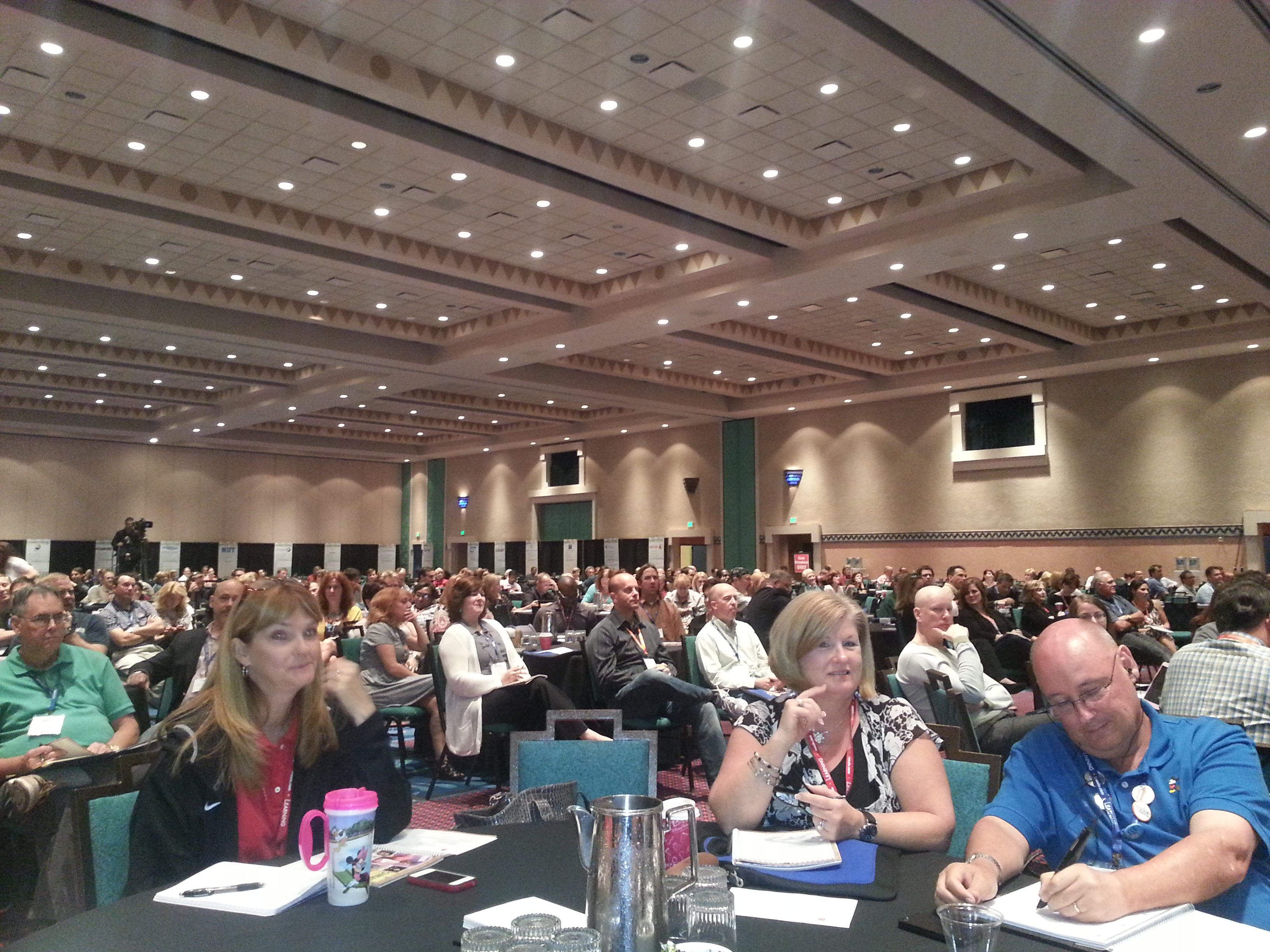The first general session at Learning 2012 on Monday started with the two writers of the Webinar Manifesto (which is available for free as a Kindle e-book for the next two days and is a project by FranklinCovey). They discussed some of the seven principles of the manifesto:
- Connect or Die
- Don’t Default
- Shut Down the Ugly
- Captivate or Alienate
- Humanize the Screen
- Crack the Feedback Code
- Cage the Monsters

These statements sound quite cryptic and will probably require reading the book to understand them better. Masie added that we should stop fixating on the one hour length of the webinar. If there is less content to discuss, then why not make it much shorter?
I recently tried out my own innovative way of doing an in-house webinar with 25-40 people attending. I turned it into what I termed a socratic webinar. Instead of showing slides and telling a story I created a set of rules for interaction, had four well-prepared questions and used the LiveMeeting feedback status to allow people to tell me they wanted to speak. For the first time ever I had the majorty of the participants engage in some real thinking and conversation. I am convinced most of them where not reading their email at the same time. Let me know if you are interested to hear more.
Next up was Ken Davenport. He is an innovative Broadway producer and marketeer. He sees storytelling as something that actually gets a physical response from people. The most interesting topic he and Elliott talked about was the level of detail that is put into a Broadway show. Every single part of those worlds is designed. This is something that I have advocated should also apply to the learning experiences we design. The new en-vogue term for this is that we need to become Learning Producers rather than Learning Designers. I don’t think I agree, I would probably prefer Learning Directors or Learning Architects. Davenport sees a “YouTube-ization” of American entertainment: we want our entertainment in bite-sized chunks. He is trying to get his industry to adapt to that.
Cindy D’Aoust is from the Meeting Professionals International (MPI). She talked with Elliott about the changes in the world of meetings. Meetings have a much shorter lead time than they used to have in the past. There is less focus on executional logistics (food, temperature, location) and more on what it can do for people.
Susan Cain has written the book Quiet about introverts. She has done a TED talks about the topic:
[youtube=http://www.youtube.com/watch?v=c0KYU2j0TM4]
Most people think that they are more extroverted than they really are. This is because we live in a society that tells us we should be extroverts. She thinks that introverts make up about one third to a half of the US population. To do good creative work you don’t just need to be collaborative, you also need to cultivate solitude. This is something we barely ever still do. In her book she talks about the “cult of openness” and she has a chapter on the problems with things like open office spaces. The most effective teams are a mix of introverts and extroverts. She believes that this is the next great diversity issue of our time. We are at the dawn of the quiet revolution: introverts are where women were in the fifties. We innately focus on the people who are the good talkers rather than look at the substance. There is some evidence that introverts are better at leading pro-active people than extroverts. This is because introverts can let pro-active people run with their ideas. Laptops and mobile phones are great devices for introverts because they allows us to communicate with hundreds or thousands of people without having to get on stage. There is a cultural dimension to this question. In Confucian societies “group harmony” is an important concept (so people “humble themselves”). This means that we sometimes get misunderstanding between people from a Confucian culture when they have to interact with people from an extrovert society. It was refreshing to have a speaker who actually likes to talk on the basis of research rather than on their own opinion. Interesting book, it is on my wishlist now.
The final speaker for the morning was Curtis Bonk who has written a book that I would have like to have written myself: The World Is Open: How Web Technology Is Revolutionizing Education (he also rocks a hairstyle from a different decade). Their main topic was MOOCs: Massive Open Online Courses. I have written about these quite often before, so a lot of this wasn’t new to me. An interesting part of their discussion had to do with assessment. Curtis thinks our CVs will consist of two parts in the future: one that reflects your formal and certified education, but also with a part that reflects the things you have done outside of the formal system. MOOCs have not really taken off in corporations yet. Curtis will talk about different business models around MOOCs in a session later in the day. Elliott encourages us to think of Open Learning not as something that only the weirdos do. It is not just a countercultural term.



